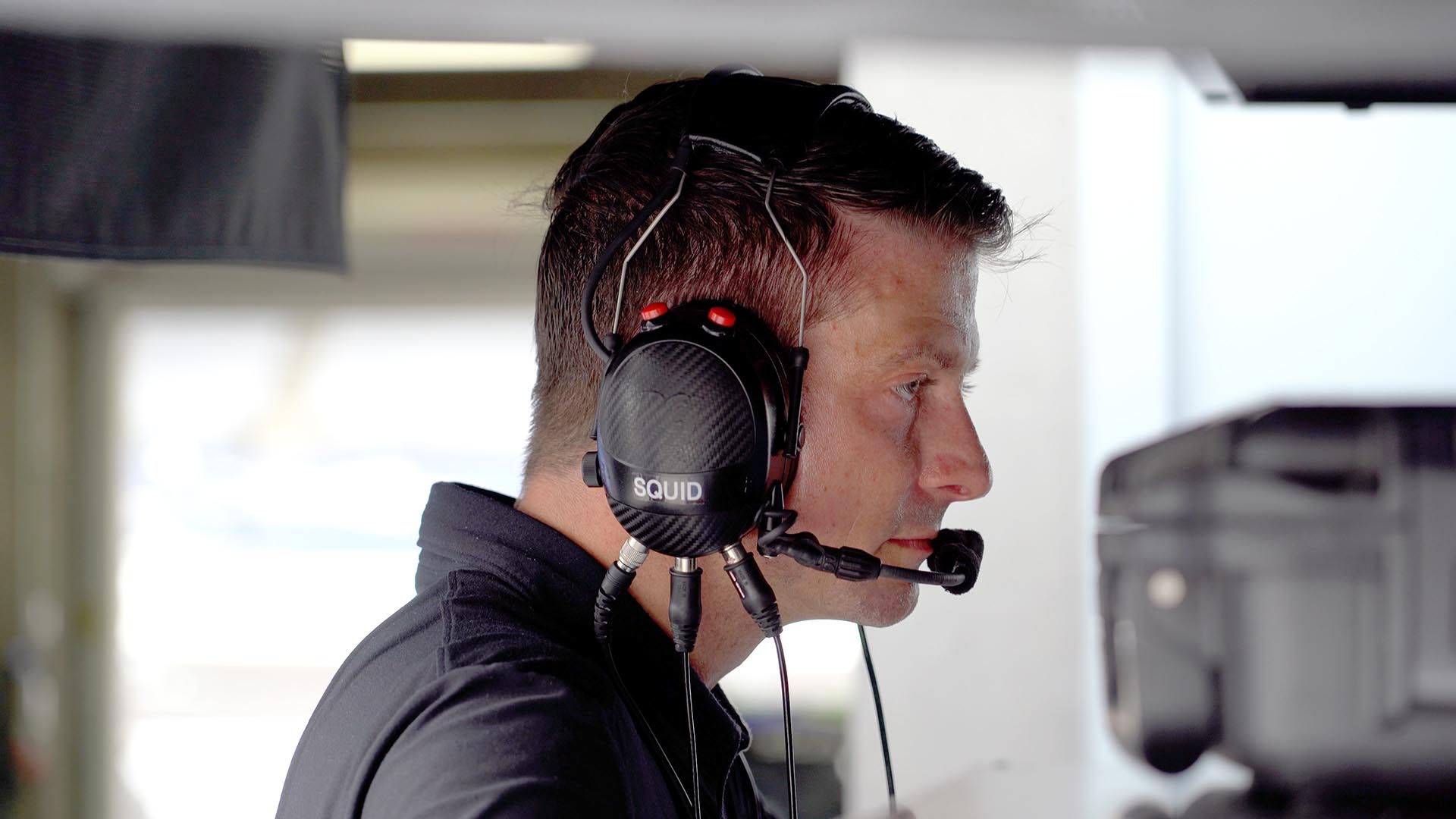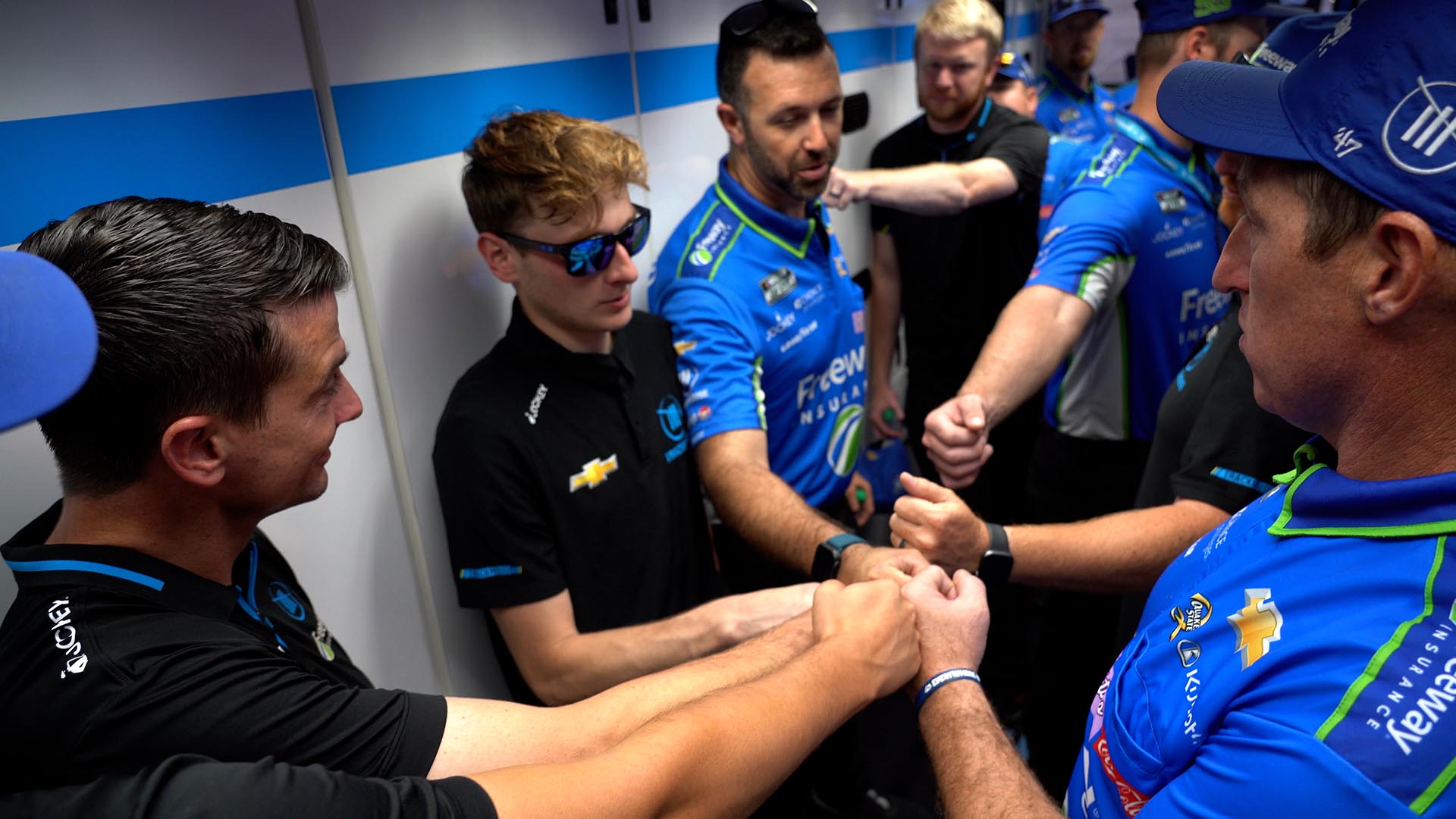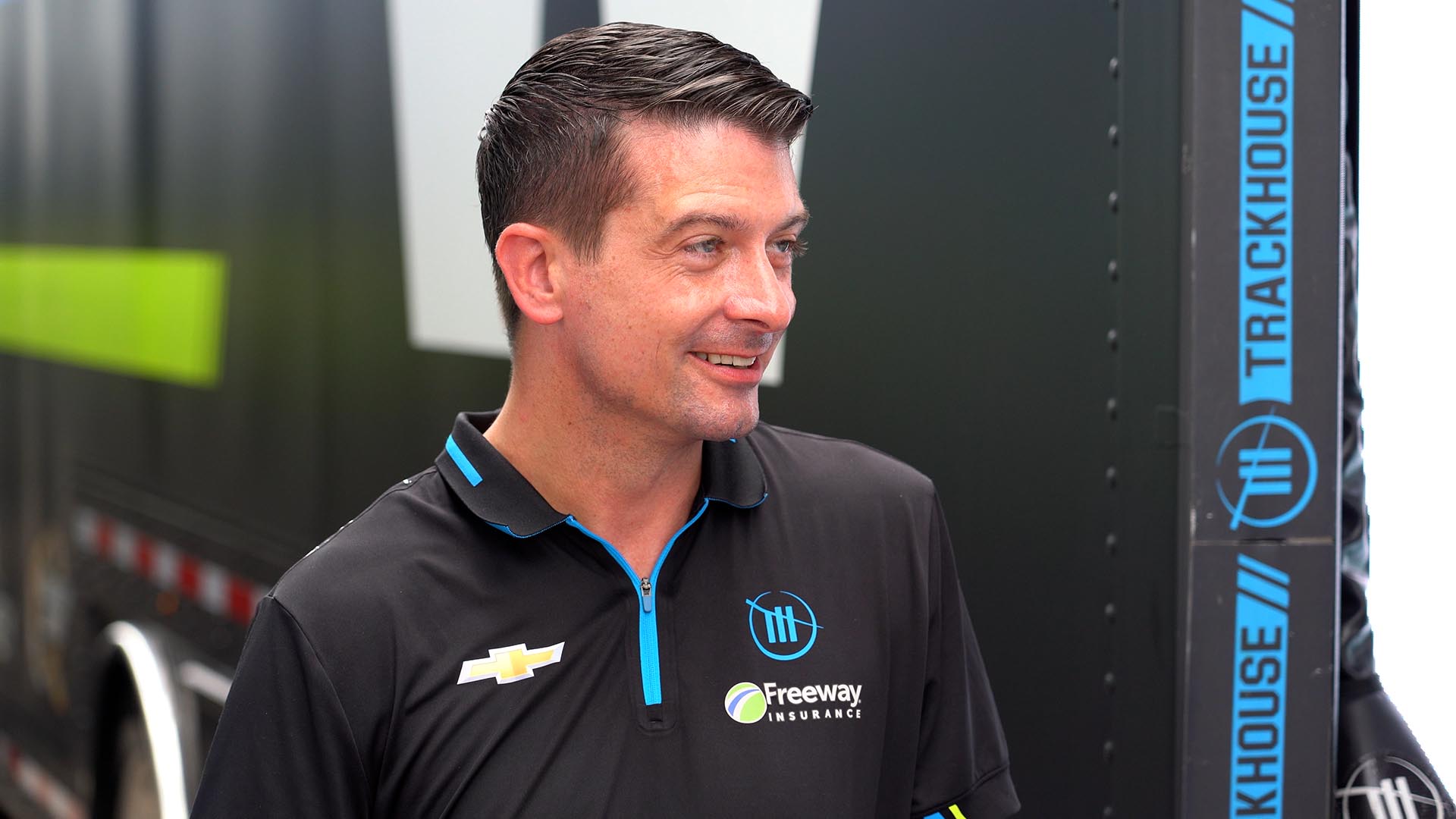NASCAR crew chief Matt Swiderski: Online Master's supercharged my motorsports career
NASCAR crew chief Matt Swiderski: Online Master's supercharged my motorsports career
As crew chief for Trackhouse Racing, Matt Swiderski (MSME ’17) has blazed his own trail in NASCAR. It’s been a circuitous trip that included a stop at SpaceX in California, as well as the self-imposed challenge of an Online Master’s in Mechanical Engineering that took eight years to finish.
Squid
To find Matt Swiderski in the NASCAR garages, you have to ask for “Squid.”
“It’s a family nickname that just stuck,” he laughs.
Matt grew up on the south side of Chicago, and in high school began racing street stock cars with a buddy at the former Illiana Speedway. While attending Kettering University in Michigan, he worked on the crews of super late model teams on the weekends. “There weren’t a lot of people making a living working on race cars around the Chicago area,” Matt says, “So my thoughts at the time were to get a good engineering job, which would provide for this as a hobby.”
Still, he decided to try. He dropped off resumes with several IndyCar teams, who told him he needed to focus on specific aspects of racing like data acquisition. During a data acquisition class, he met the director of engineering at Richard Childress Racing (RCR), who hired him in 2005 as a data acquisition engineer for their NASCAR team.
Matt became the go-to guy for simulation and data acquisition, and managed a team of 25 research and development engineers at RCR. Before long, he was spending a majority of his time on the road with the teams, which led to him becoming a race engineer (the second-in-command next to the crew chief). In 2009 he was promoted to the Cup Series (NASCAR’s top level), where he worked as a race engineer for Casey Mears and Kevin Harvick.
Then, he got burnt out on racing. “The travel schedule in NASCAR is brutal,” Matt says. “You spend so much time away from your family.”
So in 2012 he took a sabbatical, and did what most people would do with a year off — he went to work for SpaceX in California!
“At the time they had just started launching the Falcon 9 rocket,” he says. “They wanted to land the booster propulsively and reuse it, which no one had ever done. So they hired me to do simulation work on the Grasshopper, which was their first prototype of a vertical take-off and landing (VTOL) rocket. I hadn’t really done aerospace work before, and they hadn’t landed a rocket before. So in a way it was a perfect match!”

One Class at a Time
During all of this moving and traveling, Matt had also decided to undertake another crazy challenge: completing Purdue’s #1-ranked Online Master’s in Mechanical Engineering.
“I felt that I needed to be able to drill down deeper into controls and dynamics,” he says. “As I was working on these simulation tools, I knew that some advanced math classes were going to help me. Greg Shaver taught Control Systems, and John Starkey taught Vehicle Dynamics. I also loved the Numerical Methods class.”
The flexibility of an Online Master’s was vital for Matt, spending most of the year traveling from track to track. “I was off and on with the degree, depending on how busy my schedule was,” he says. “It was always a challenge finding someone to proctor an exam. If our practice got rained out, I’d be excited because I’d have time to go back to my hotel and study. I remember being in Phoenix and having to find a UPS store to mail in a project that was due that weekend.”
While it would have been easy to let it go, Matt stuck it out and finished his Master’s in 2017 — eight years after starting it. “I started applying what I learned almost immediately, especially in my simulation work,” he says. “We wrote a genetic algorithm to sort the tires, so they would match up better. That would never have occurred to me had I not finished that Master’s degree.”

On the Road Again
After his year away at SpaceX, Matt began to miss racing. He moved his family back to North Carolina and went back to work for RCR’s Xfinity team, which is one level below the Cup series. This time, he served as crew chief. “The transition from race engineer to crew chief is interesting,” he says. “You’re doing a lot of the same technical work and solving the same problems; but as a crew chief, the final decision is on you. It’s really easy to suggest a strategy or setup change, but the crew chief has to make that final decision and own that responsibility.”
In 2018 he joined Penske Racing, also as a crew chief in the Xfinity series, where he worked alongside fellow Boilermaker Jonathan Hassler. Then in 2021, he finally got the call. Newcomers Kaulig Racing were running a part-time Cup Series schedule after COVID, and needed a crew chief. “I love the challenge of building a team from the ground up,” Matt says. “After seven races with this team, my driver AJ Allmendinger scored a win at Indianapolis Motor Speedway. It was a pretty incredible experience.”
His shepherding of new teams got the attention of Trackhouse Racing, who hired him as crew chief in 2024. “They had a partnership with RCR, so I got to see them in their early days,” he says. “I saw how they were building their organization, and I knew that they had the potential to grow into a championship caliber team.”
It wouldn’t take long for Matt to prove himself. In his second race as crew chief for the #99 team, his driver Daniel Suarez was near the front of the pack at Atlanta Motor Speedway. In NASCAR’s closest three-way finish ever, Suarez edged out Ryan Blaney and Kyle Busch by mere thousandths of a second. “I thought we’d have a solid weekend, but I didn’t expect to win a race right off the bat!” he says. “It was great to get a win and get in the playoffs, and start off my career at Trackhouse.”
He pauses. “But the thing about racing,” he continues, “is that it puts you in your place. You could have great success one week, but you know you have to travel to a new racetrack and start the battle over from scratch every weekend.”
And he means every weekend. While he’s reviewing the data from the previous weekend, Matt and his team are using it to create strategies for the next weekend, as well as contingencies should any number of things go wrong. “My job involves a lot meetings,” Matt laughs. “We meet with the driver to discuss strategy. We meet with the engineers to analyze the data from each individual racetrack. We meet with our simulation people to create a plan, and run simulations to determine how to execute that plan. We meet with the pit crew, our athletes who change the tires.”
And that’s all before they even arrive at the track. Leading up to the race itself, Matt is everywhere — working closely with his team to finalize the plan. During the race, he’s talking on his headset, making adjustments on the fly based on the advice of all his engineers and teammates.
Then there’s the driver. “A crew chief has to act as psychologist and coach,” Matt says. “AJ Allmendinger was very fiery and intense, and my personality is the exact opposite, so we had to learn how to balance each other. Daniel’s a lot more easygoing, but I still need to encourage him and convince him to focus on specific things.”

Boiler Up
Motorsports is a very specific niche, and requires a particular brand of commitment. Even after a grueling 36-week NASCAR schedule, Matt spends the off-season rebuilding hot rods at his own shop in North Carolina.
“There’s just nothing like the competition of it,” Matt says. “There’s no other job where, at the end of the week, you’re very clearly told how you did, what you did poorly, and what you can improve. I love it, because there’s always hope going into the next week that you can figure something out, get better, and have a great weekend.”
It’s no surprise, then, that Purdue Engineers are all over the racing world. Purdue hosts the only accredited motorsports engineering degree in the country, headquartered just steps from the Indianapolis Motor Speedway. Notable Boilermaker alumni include fellow NASCAR crew chiefs Chris Gabehart and Jonathan Hassler; IMSA crew chief Chris Andrews; and Chip Ganassi’s Angela Ashmore, the first female crew member to win the Indy 500.
“Purdue Engineering is like a torture test,” laughs Matt. “It proves you’re a problem solver — that you’re not going to give up, and you’re going to get through it.”

Writer: Jared Pike, jaredpike@purdue.edu, 765-496-0374
